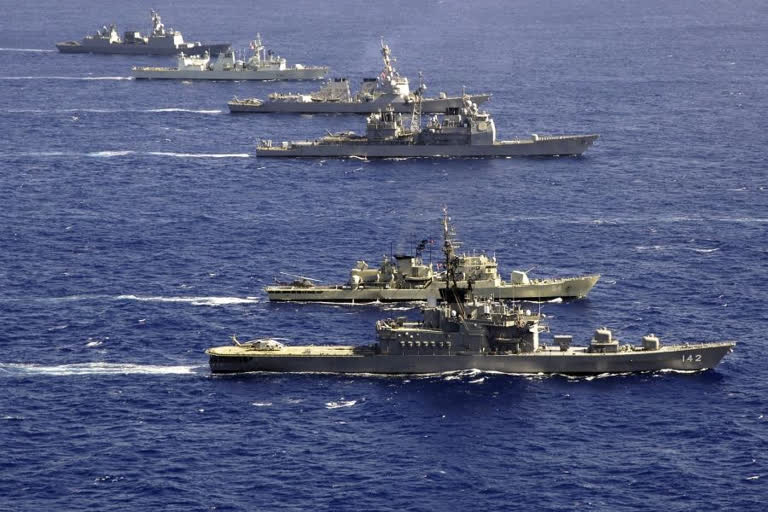New Delhi: India will take part in the about 27-nation maritime exercise “Rim of the Pacific” exercise, or RIMPAC, billed as the world’s largest maritime drill, scheduled most likely in June-July, a source in India’s security establishment confirmed to ETV Bharat on condition of anonymity.
The official source also added that Indian representation was present in the US Navy’s 3rd Fleet-hosted final planning conference (FPC) for RIMPAC 2022 that was held at the Joint Base Pearl Harbor-Hickam from March 21-24, 2022.
The Indian Navy and the US Navy are still tight-lipped about making public the names of participating countries in the 28th edition of the biennial RIMPAC to be held in both Hawaii and San Diego. But a US Navy release had said that RIMPAC 22 will witness about 27 “like-minded” partner nations who have committed 41 ships, four submarines, more than 170 aircraft, and about 25,000 personnel.
Indicating the extensiveness of the upcoming mammoth exercise, it said: “The size and scope of RIMPAC 2022 are expected to more closely resemble the 2018 iteration following a scaled-back version in 2020, but with COVID mitigation measures in place.”
India’s participation would mean this will be the country’s first RIMPAC participation after India-China hostilities broke out on the LAC from April 2020 onwards that resulted in massive deployment of about 100,000 troops and military equipment on both sides of the disputed border. India and China’s ties have worsened particularly after the violent Galwan incident of June 15, 2020, that saw at least 24 lives being lost.
Also read:China's provocative behaviour, amassing of troops disturbed peace along LAC in Eastern Ladakh: India
Meanwhile, Russia’s military action in Ukraine has ironically positioned India and China in a small group of countries that have refused to unconditionally condemn Russia. India’s position on Ukraine has been described by US President Joe Biden as “shaky” even as India continues to be part of the “Quad” or the “Quadrilateral Security Dialogue”, understood to be an anti-China platform along with the US, Australia and Japan.
